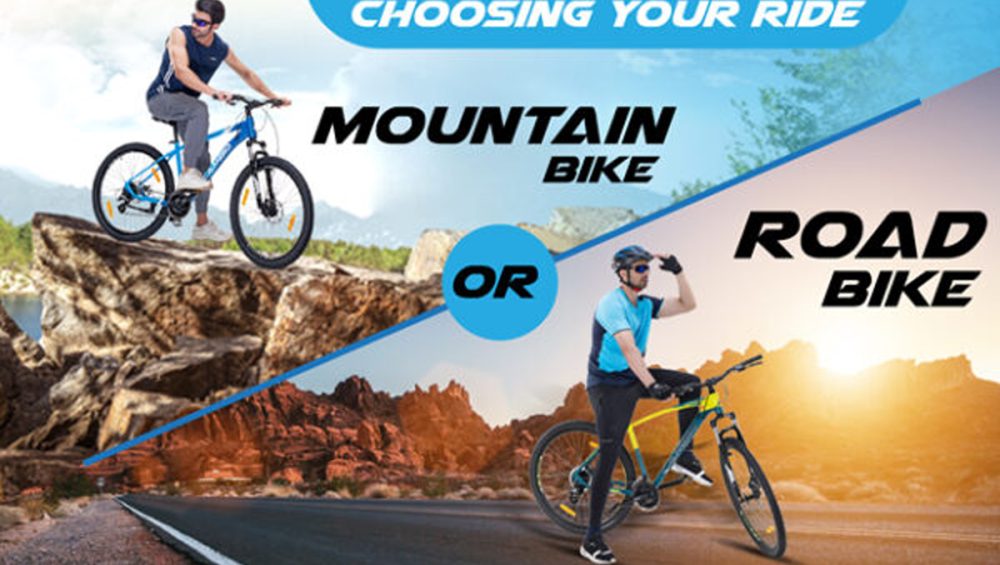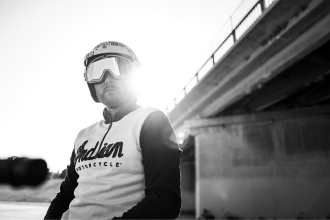Welcome to the ultimate comparison between MTB cycles and road bikes! On one side, we have tough and adaptable mountain bikes, perfect for rough paths and trails. On the other side, we’ve got fast and streamlined road bikes, great for smooth roads and speed. Whether you love exciting adventures or speedy journeys, picking between these bikes can be hard. If you decide to buy a cycle online or offline, a guide will help you choose the right one.
Historically, road cycles emerged in the 19th century to streamline transportation. As the name suggests, road cycles were meant for paved roads and came with thin tires and lightweight frames. The initial design used wooden frames and solid rubber tires. Initially, it gained popularity in the late 1800s with cycling clubs. The evolution led to better gear systems and aerodynamics.
In comparison, the mountain cycle originated in the 1970s from modified cruiser bicycles. The need for adventurous exploration and go-anywhere ability, which the road cycles lacked, led to their birth. Mountain bike cycles were equipped with fat tires, sturdy frames, and front suspension for shock absorption, designed for off-road trails and rugged terrains.
Moreover, mountain bike cycles were designed in such a way for riders seeking thrill in downhill descents. Innovations over the years led to innovations with specialized components for diverse landscapes.
Let’s explore their designs, how they perform, and the exciting feelings they bring. Get ready to learn about the differences between MTB cycles and road bikes!
Frame Geometry
For many riders, speed is the most important factor. Hence aerodynamic frames are used. They exert as little force as possible when they slice through the air before them.
The top tube is significantly longer on a road bike, and the handlebars are frequently offset further. As a result, the rider can adopt a stretched-out riding position that allows for a low, aerodynamic stance.
With shorter top tubes and reach, modern mountain bikes have less aerodynamic and more upright riding positions. For stability and control on uneven terrain, this is considerably superior. Your center of gravity will be lower when climbing than on a road bike, making it easier to control the bike when it gets difficult.
Suspension
Smooth, paved roads are ideal for riding road bikes. Road bikes do not need suspension. It adds unneeded weight to a bike that would otherwise be relatively light.
Although there are completely rigid mountain bikes, most MTBs feature some kind of suspension to smooth out the bumpy ground beneath the wheels. If you’re attempting high jumps and drops, it’s also helpful.
Suspension forks are the only component on hardtail mountain bikes. They have a fixed rear triangle as a result. A hardtail’s travel (the distance between static and compressed) ranges from 100 to 140 mm.
Features of full-suspension mountain bikes include a suspension fork and rear suspension. A more pleasant ride and superior handling on tough trails are guaranteed with both. Due to the rear suspension, they are heavier than other mountain bikes. However, this gives full-suspension MTB bikes travel ranges from 100 mm up to 200 mm making them dependable off-roading machines.
Tires
Mountain bike tires are broader and larger compared to road cycles. Additionally, they come with a knobby tread design that improves grip on unpaved roads and is more resilient and more robust. They feature various tread patterns, including knobby, blocky, ramped, or spaced with wider profiles, providing superior traction and stability and grip needs, which makes them ideal for off-road adventures.
Road bike tires are narrower, use more air pressure, have little to no tread, and can give performance at high speeds. Road bike tires are designed for smooth and fast riding on paved surfaces, offering low rolling resistance to enhance speed and efficiency.
Handlebars
The handlebars are the differentiating factor between a road bike & mountain bike. Drop bars are curved handlebars on road bikes that allow for three different riding hand positions: drops, hoods, and tops. Hoods are the most typical hand position for road riding. The tops are utilized for casual riding & climbing, while the drops are used for racing, descending, and sprinting.
Flat handlebars cross the front of mountain bikes from left to right. There is only one riding posture with flat mountain bike handlebars with your hands on either side of the flat bar. The shift & brake levers are easy to access with just a finger or thumb
owing to their placement at the end of each side of the bar.
MTB cycles offer better leverage & handling in tight corners because flat bars are wider than drop bars. Flat bars are superior to drop bars for steep and tight single-track turns.
Final Words
When choosing the right bike, the options can seem endless. Whether you’re drawn to the rugged trails of mountain cycles or the smooth paths of road cycling, each style offers a unique experience. But what if you could have a bike combining innovation and practicality? This is where Cambio Bikes step in. With their ergonomically designed frames and German Engineering, Cambio Bikes offer the best of both worlds. Whether conquering city streets or venturing into off-road terrain, you can buy a cycle online with Cambio Bikes, providing reliable, comfortable, and stylish companions on your journey.







